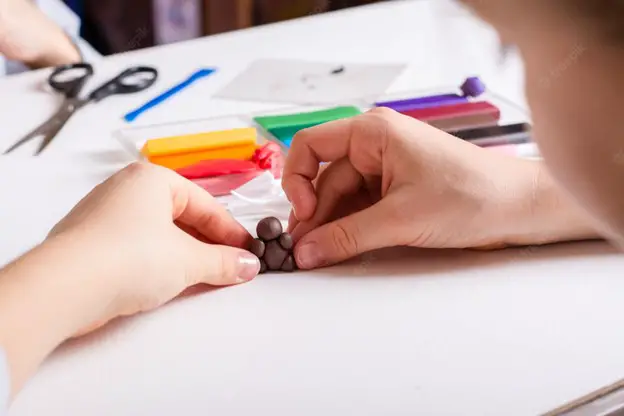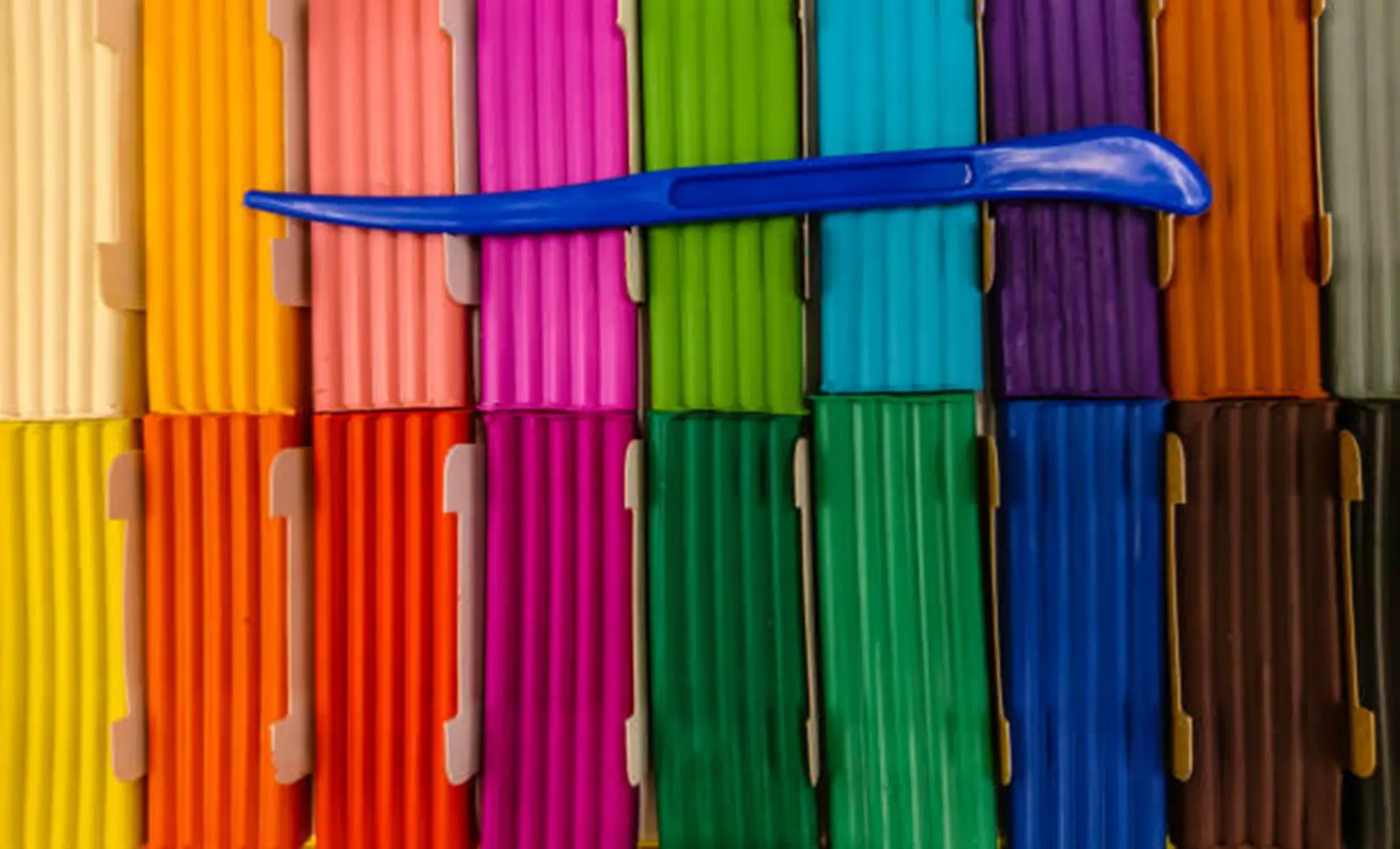The most recent item that is now used in pottery is Polymer. Polymer is generally a modeling clay used for a variety of purposes. This type of clay is hardenable and is a form of Polymer Polyvinyl Chloride (PVC).
Factually, polymer clay does not consist of clay minerals; however, it gets to a gel-like consistency that can be molded into different craft items. It is used to make various items like jewelry, home decoration items, toys, and more.
Why Bake Polymer Clay?
Polymer clay is bendable, making it very easy to mold it into any shape. However, to make it useable, it is essential to make it hard after giving the final touches. The best way to harden it is by curing or baking it.
Although some polymer clay types available in the market do not need baking, they can air-dry over time. However, this type of polymer clay is not feasible for creating intricate designs. Also, there is only a little time to model polymer clay when air-dry polymer clay is used.
Hence, baking polymer clay is a great way to ensure that the pottery item retains its shape and is strengthened.
How Long Does It Take To Bake Polymer Clay?
Since polymer clay needs baking for the best results, knowing the right period to do it is crucial. It is so that the baking process gets completed in the most appropriate methods without impacting the quality or looks of the items.
Although there are many methods to harden polymer clay, like heat guns, tossing it in frying pans, using electric roasters, boiling, fried, and much more. However, baking is the most appropriate option to harden clay to ensure the outcome is proper.
Thus, it is essential to check the time for which the baking is being done. The approximate time for which the baking needs to be done for polymer clay is about 30 to 50 minutes. However, different factors impact the overall time for which the baking is to be done.
Factors Affecting The Time It Takes To Bake Polymer Clay
The time it takes to bake any object made of polymer clay can vary from time to time. A little time here and there can make a lot of difference in the polymer clay object’s texture and strength.
Knowing which factors ultimately affect the time for baking polymer clay can help prep the clay in the best way possible. So, the following are some factors to consider.
1. The Temperature
The temperature is the most prominent deciding factor that impacts the time you need to bake the polymer clay. When the temperature is high, the process can finish a lot faster. But there is also a downside to baking the polymer clay at a high temperature. The clay can burn or even develop cracks if it goes above an average temperature.
It will take considerably longer if the polymer clay is baked at lower temperatures. If the object is cured or baked at lower temperatures, there are chances that the items will not get hard correctly. Ultimately, baking at around 260 degrees Fahrenheit or 280 degrees Fahrenheit is feasible for a properly hardened pottery piece.
Different Temperatures That Determine Polymer Clay Baking Time
Although the polymer clay packaging has the temperature mentioned, knowing the temperatures can help.

Below is a table that specifies how long the polymer clay should be baked and at what temperatures. It is estimated based on the clay thickness of 6mm.
Temperature |
How Long To Bake? |
230 degrees Fahrenheit |
20 to 30 minutes |
250 degrees Fahrenheit |
15 to 25 minutes |
275 degrees Fahrenheit |
15 to 20 minutes |
2. The Quality Of Polymer Clay
Many types of quality polymer clay are available in the market. Not all work the same way when it comes to the hardening of the items made of polymer clay. If the polymer clay’s quality is good, it will harden on a standard timeline, considering it is baked at a constant temperature.
However, if you buy cheap or low-quality polymer clay, it is good to know that the timeline might be different every time. Also, the results will differ each time. There is also a possibility that even after following all the procedures, the polymer clay will have pores or will crumble.
So, purchasing high-quality clay for the best baking results in the least time is recommended. STAEDTLER FIMO Soft Polymer Clay is one such good quality clay. You can bake it in only 30 minutes in your home oven by heating it at 230 degrees Fahrenheit.
3. Thickness Of The Clay
The thickness of the clay plays an essential role in determining how long the polymer clay item is to be baked. If the polymer clay is too thick, it will take quite a lot of time to bake it thoroughly. Also, there are chances that the insides of the clay can remain soft.
On the contrary, if the polymer clay is not thick enough, it is essential to bake it for lesser time so that the items do not break or have cracks.
How To Bake Polymer Clay?
There is a proper way to bake polymer clay to ensure that the best results come out. More often than not, when the polymer clay does not get baked effectively, the whole time invested in making it can go to waste.
Step 1: Read the temperature of the clay package and preheat the oven accordingly.
Step 2: Prepare your designs and take a flat baking sheet.
Step 3: Cover the sheet with parchment paper and place the item on it.
Step 4: Cover the item with aluminum foil and close the oven.
Step 5: Bake it at the temperature that is mentioned on the box of the polymer clay.
Step 6: Do not overbake or underbake.
How To Know When Polymer Baking Is Complete?
When the final product comes, if it can cut or break without crumbling, it is the sign that shows that polymer clay has baked to perfection. Another thing to know is that when you press the cured object, your nail will not sink into the object.
Conclusion
Curing or baking polymer clay is essential for a neat and finished look. However, ensure that when baking the polymer clay, you should not leave it unattended, as the tiniest difference can ruin the whole piece. Also, ensure to read all the packing instructions before starting any procedure.








